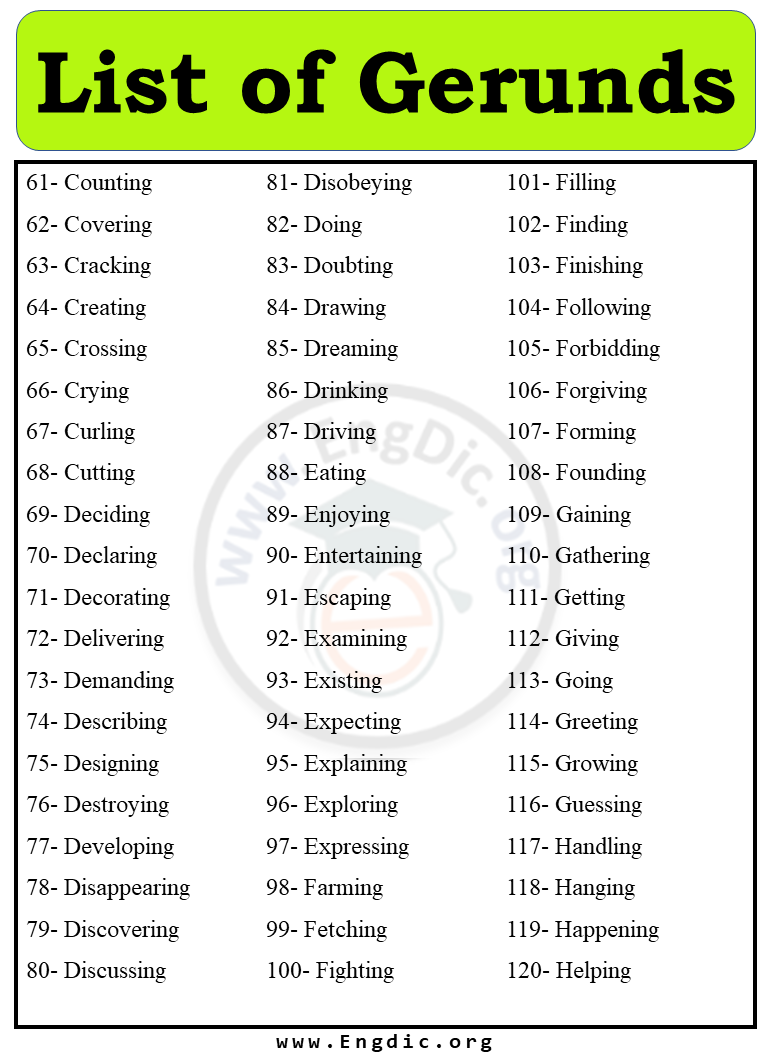Gerunds are verb forms that function as nouns in a sentence. They end in -ing and can be used in various ways to convey different meanings. Understanding the different types of gerunds can help improve your writing and communication skills.
There are several types of gerunds that serve different purposes in a sentence. Let’s explore some of the common types:
Different Types of Gerunds
Subject Gerunds: Subject gerunds are used as the subject of a sentence. For example, “Swimming is my favorite hobby.” In this sentence, “swimming” is the subject gerund.
Object Gerunds: Object gerunds function as the object of a verb. For instance, “I enjoy dancing.” Here, “dancing” is the object gerund.
Genitive Gerunds: Genitive gerunds show possession or relationship. For example, “She’s worried about his driving.” In this sentence, “driving” is the genitive gerund.
Attributive Gerunds: Attributive gerunds modify nouns in a sentence. For instance, “I read an interesting book about cooking.” Here, “cooking” is the attributive gerund modifying the noun “book.”
Objective Gerunds: Objective gerunds function as the object of a preposition. For example, “She is good at singing.” In this sentence, “singing” is the objective gerund.
Understanding the different types of gerunds and how they are used in sentences can help you communicate more effectively. By incorporating gerunds into your writing, you can add variety and depth to your language. Practice using gerunds in different contexts to enhance your grammar skills and improve your overall communication.
In conclusion, gerunds play a crucial role in the English language by acting as nouns and adding complexity to sentences. By familiarizing yourself with the different types of gerunds and how they are used, you can enhance your writing and communication skills. Remember to practice using gerunds in various contexts to become more proficient in their usage.
